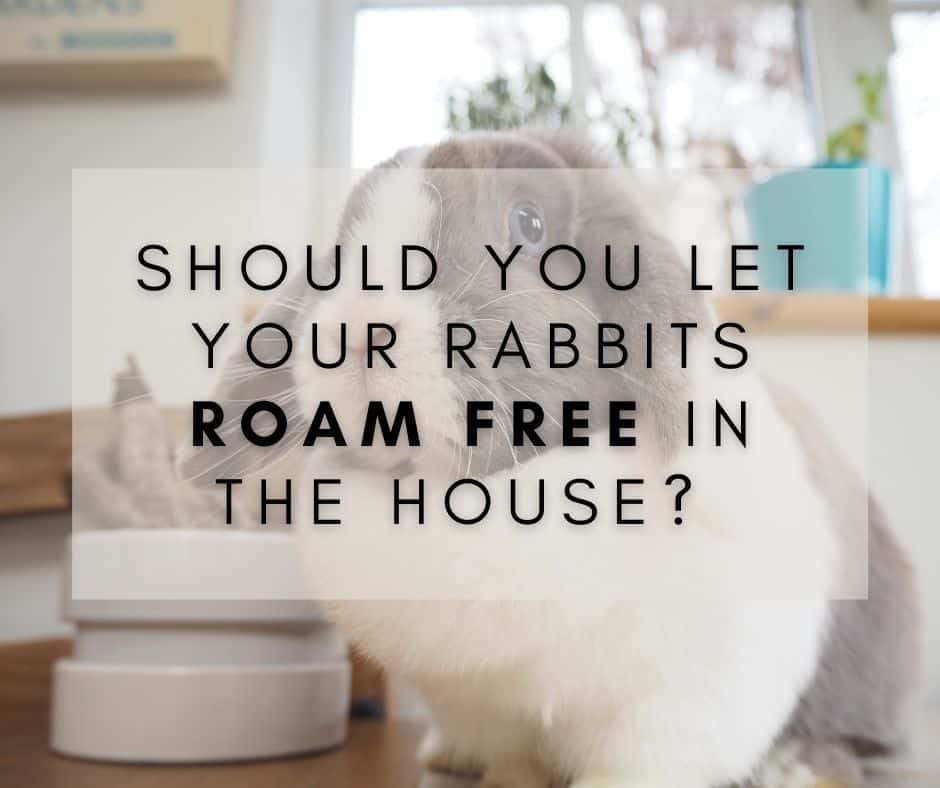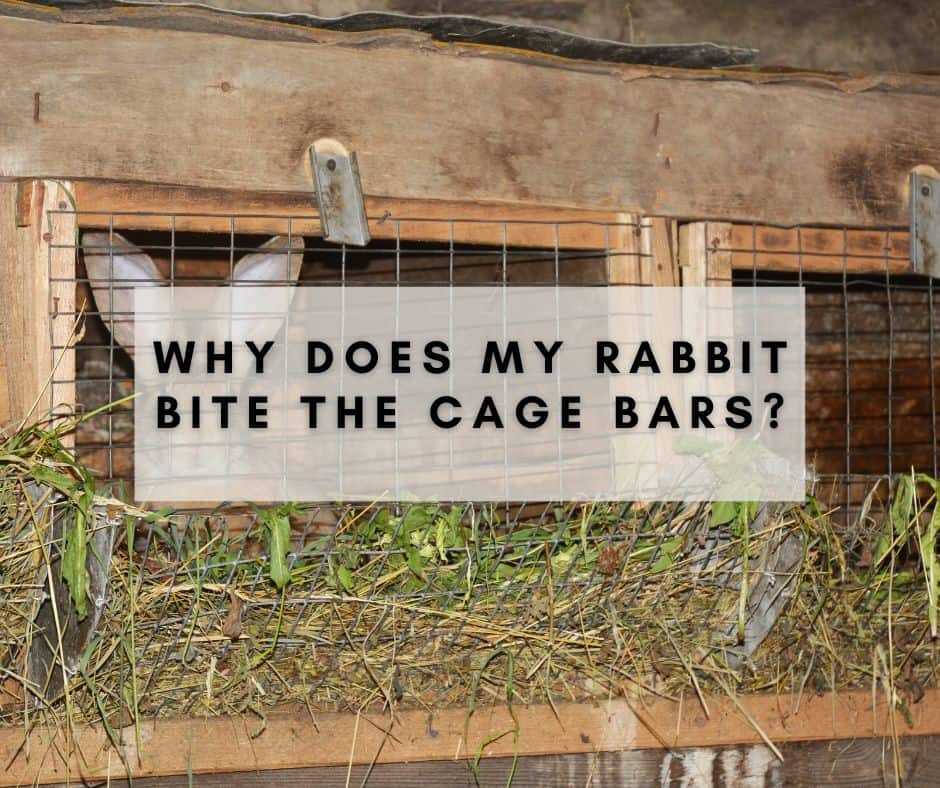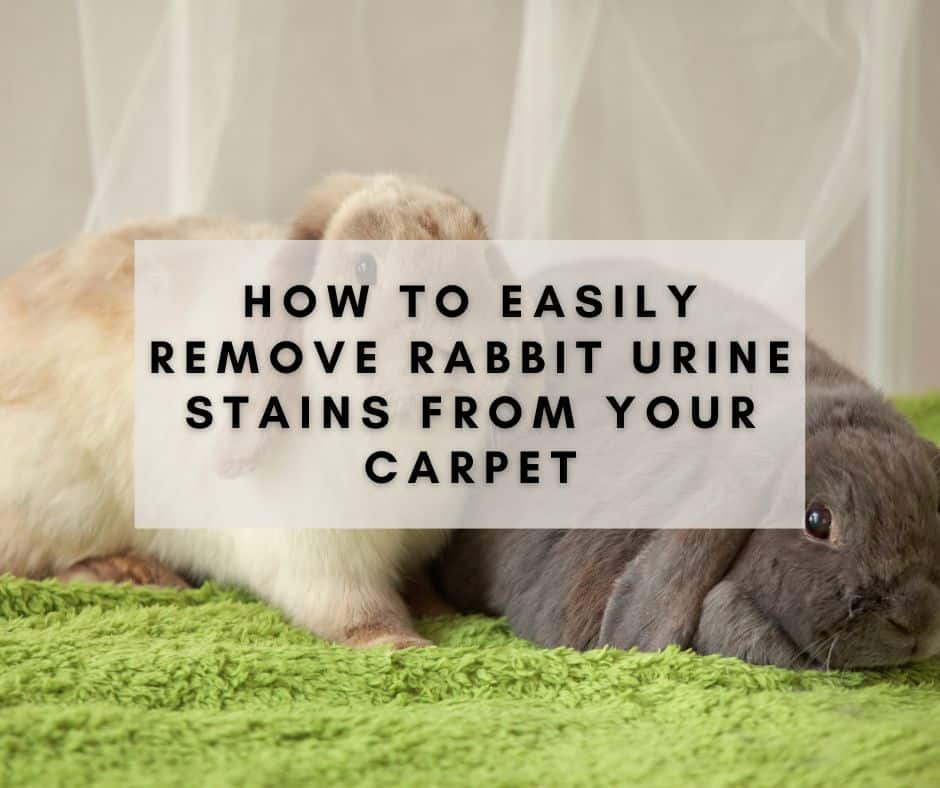If you’re a rabbit owner, you may be wondering whether or not it’s safe to let your rabbits roam free in your house. While rabbits can make great indoor pets, it’s important to consider the risks and benefits of allowing them to roam free.
One of the biggest benefits of letting your rabbits roam free is that they get plenty of exercise and room to explore. Rabbits are curious animals that love to explore their surroundings, and giving them the freedom to do so can help keep them happy and healthy. Additionally, free-roaming rabbits are less likely to become overweight or develop health problems associated with a sedentary lifestyle.
However, there are also risks associated with letting your rabbits roam free in your house. For example, rabbits can chew on electrical cords and other items that could be dangerous or even deadly. Additionally, rabbits may be more prone to accidents or injuries if they are allowed to roam free, especially if your house has stairs or other hazards. It’s important to take steps to minimize these risks if you do decide to let your rabbits roam free.
Contents
Benefits of Letting Your Rabbits Roam Free
Letting your rabbits roam free in your house can be both beneficial for your rabbits and enjoyable for you. Here are some of the benefits:
Physical and Mental Stimulation
When you let your rabbits roam free, they get plenty of exercises, which is important for their physical health. Rabbits are active animals and need space to run around and explore. Giving them the freedom to move around can help them maintain a healthy weight and prevent obesity.
In addition to physical exercise, letting your rabbits roam free can provide them with mental stimulation. Rabbits are naturally curious and love to explore their environment. Giving them access to different rooms and spaces can keep them mentally engaged and prevent boredom.
Bonding Opportunities with Your Rabbit
When your rabbits are free to roam around, they have more opportunities to interact with you and other members of your household. This can help strengthen the bond between you and your rabbits. You can play with them, pet them, and even teach them tricks.
Having your rabbits around you can also help you learn more about their personalities and behaviors. You can observe their habits and preferences, which can help you provide better care for them.

Potential Risks of Letting Your Rabbits Roam Free
Chewing and Destruction
One of the biggest risks of letting your rabbits roam free in the house is the potential for chewing and destruction. Rabbits have an instinct to chew and can cause significant damage to furniture, baseboards, and electrical cords. They may also chew on plants, which could be toxic to them. You can minimize the risk of destruction by providing your rabbits with appropriate toys and chew items.
Injury and Illness
Another risk of letting your rabbits roam free is the potential for injury and illness. Rabbits can easily injure themselves by jumping off furniture or getting caught in tight spaces. They are also susceptible to illness if they come into contact with household cleaning products or other toxins. Additionally, if your rabbit is not litter trained, it may leave droppings and urine throughout your house, which could pose health risks to you and your family.
Household Damage
Finally, letting your rabbits roam free in the house can also cause damage to your home. Rabbits may dig into carpeting or scratch at doors and walls, causing costly damage. They may also mark their territory with urine, which can leave a strong odor and stain on carpets and other surfaces.
While it can be tempting to let your rabbits roam free in the house, it is important to consider the potential risks and take steps to minimize them. Providing appropriate toys and chew items, ensuring your rabbits are litter trained, and monitoring their behavior can help to reduce the risk of damage to your home and injury or illness to your rabbits.
Preparing Your Home for Free-Roaming Rabbits
Securing Hazardous Areas
Before letting your rabbits roam free in your home, it’s crucial to ensure their safety by rabbit-proofing the entire space. Start by identifying hazardous areas such as the kitchen, bathroom, and any rooms with exposed cords or wires. Rabbits love to chew, and electrical cords can be fatal if they are chewed through.
Once you have identified the hazardous areas, secure them by blocking off access with baby gates or other barriers. You can also use cord covers or tubing to protect cords and wires. Keep in mind that rabbits are excellent jumpers, so make sure any barriers are high enough to prevent them from jumping over.
Providing Safe Spaces for Your Rabbit
While rabbits love to explore, they also need a safe space to retreat to when they feel scared or overwhelmed. Provide your rabbits with a designated area that is their own, such as a playpen or a large cage. This area should be spacious enough for them to move around comfortably and contain food, water, and a litter box.
In addition to a designated safe space, rabbits also need plenty of toys and things to chew on to keep them mentally stimulated and happy. Provide them with a variety of toys such as cardboard boxes, tunnels, and balls. You can also give them chew toys made specifically for rabbits to help satisfy their natural urge to chew.
Training Your Rabbit for Free-Roaming
If you’re considering letting your rabbits roam free in your home, it’s important to train them properly to ensure their safety and your sanity. Here are some tips for training your rabbit for free roaming:
Litter Training
One of the first things you’ll need to do is litter-train your rabbit. Choose a location for the litter box, and place it on a hard, uncarpeted surface. Consider using a shallow storage container as a litter box. Spot-clean the box with a litter scoop 1-2 times a day and deep clean the box once a week. If your rabbit urinates outside the box on the carpet, use an enzyme cleaner to remove the odor.
Teaching Boundaries
It’s important to teach your rabbit where they are allowed to go and where they are not allowed to go. Use baby gates or other barriers to block off areas that are not safe for your rabbit, such as rooms with toxic plants or electrical cords. You may also want to use a playpen to create a safe space for your rabbit to play in.
Positive Reinforcement
Use positive reinforcement to encourage good behavior. When your rabbit uses the litter box correctly or stays within their designated play area, offer them a treat or praise them with a gentle pat. Be patient and consistent with your training, and your rabbit will soon learn what is expected of them.
Conclusion
Deciding whether or not to let your rabbits roam free in the house is a personal choice that requires careful consideration. It is important to weigh the pros and cons, and to take the necessary steps to ensure the safety and well-being of your furry friends.
If you do decide to let your rabbits roam free, it is important to bunny-proof your home and provide them with plenty of space to play and explore. You should also make sure that they have access to fresh water and hay, and that they receive regular veterinary check-ups.
On the other hand, if you decide that free-roaming is not for you, there are still plenty of ways to give your rabbits the exercise and mental stimulation that they need. You can provide them with a large playpen or create a designated play area in your home.
Ultimately, the decision to let your rabbits roam free in the house is a personal one that depends on your lifestyle, your home, and your rabbits’ individual needs. By taking the time to consider all of the factors involved, you can make the best decision for you and your furry friends.




